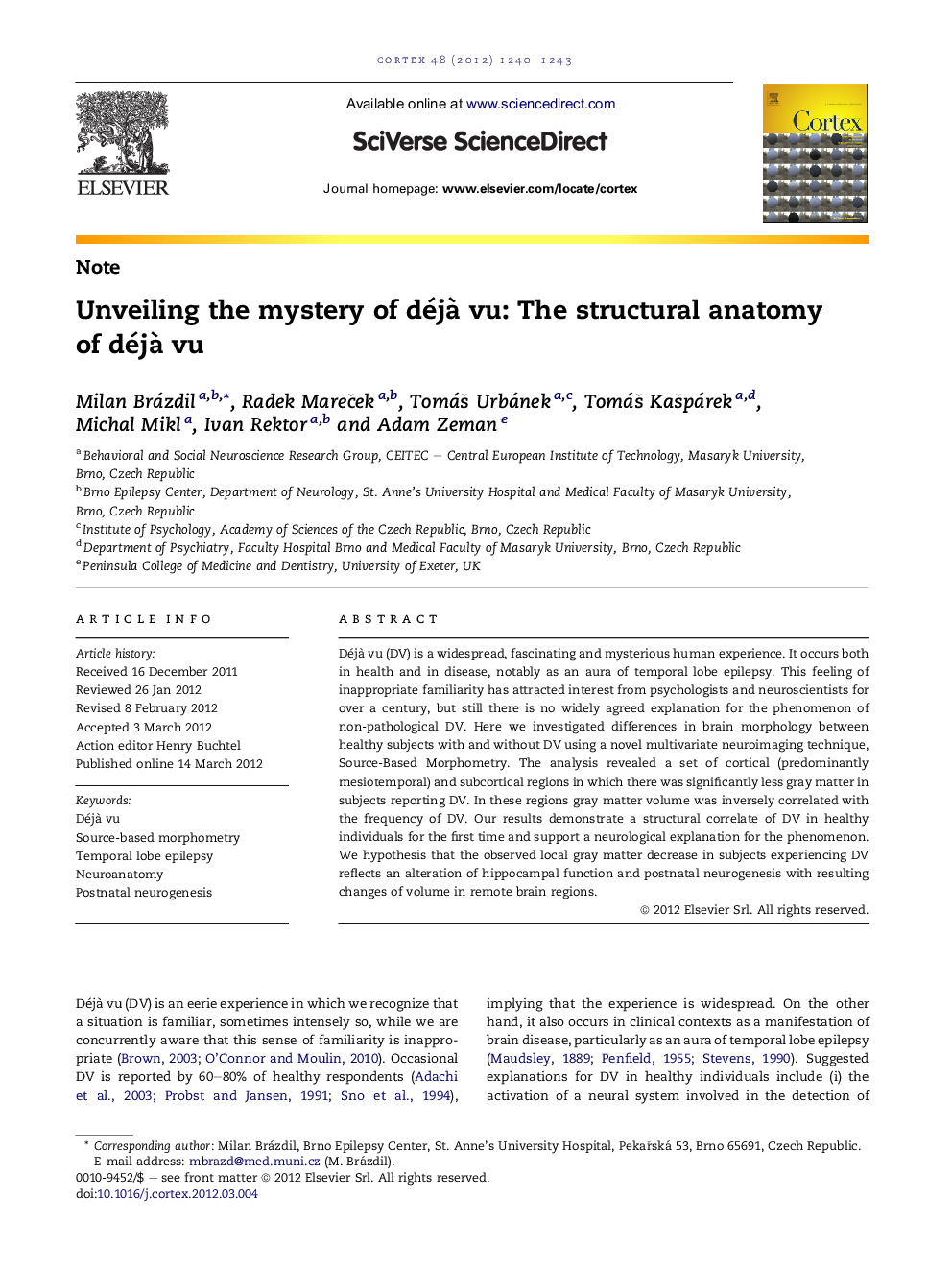| Article ID | Journal | Published Year | Pages | File Type |
|---|---|---|---|---|
| 10463322 | Cortex | 2012 | 4 Pages |
Abstract
Déjà vu (DV) is a widespread, fascinating and mysterious human experience. It occurs both in health and in disease, notably as an aura of temporal lobe epilepsy. This feeling of inappropriate familiarity has attracted interest from psychologists and neuroscientists for over a century, but still there is no widely agreed explanation for the phenomenon of non-pathological DV. Here we investigated differences in brain morphology between healthy subjects with and without DV using a novel multivariate neuroimaging technique, Source-Based Morphometry. The analysis revealed a set of cortical (predominantly mesiotemporal) and subcortical regions in which there was significantly less gray matter in subjects reporting DV. In these regions gray matter volume was inversely correlated with the frequency of DV. Our results demonstrate a structural correlate of DV in healthy individuals for the first time and support a neurological explanation for the phenomenon. We hypothesis that the observed local gray matter decrease in subjects experiencing DV reflects an alteration of hippocampal function and postnatal neurogenesis with resulting changes of volume in remote brain regions.
Related Topics
Life Sciences
Neuroscience
Behavioral Neuroscience
Authors
Milan Brázdil, Radek MareÄek, TomáÅ¡ Urbánek, TomáÅ¡ KaÅ¡párek, Michal Mikl, Ivan Rektor, Adam Zeman,
